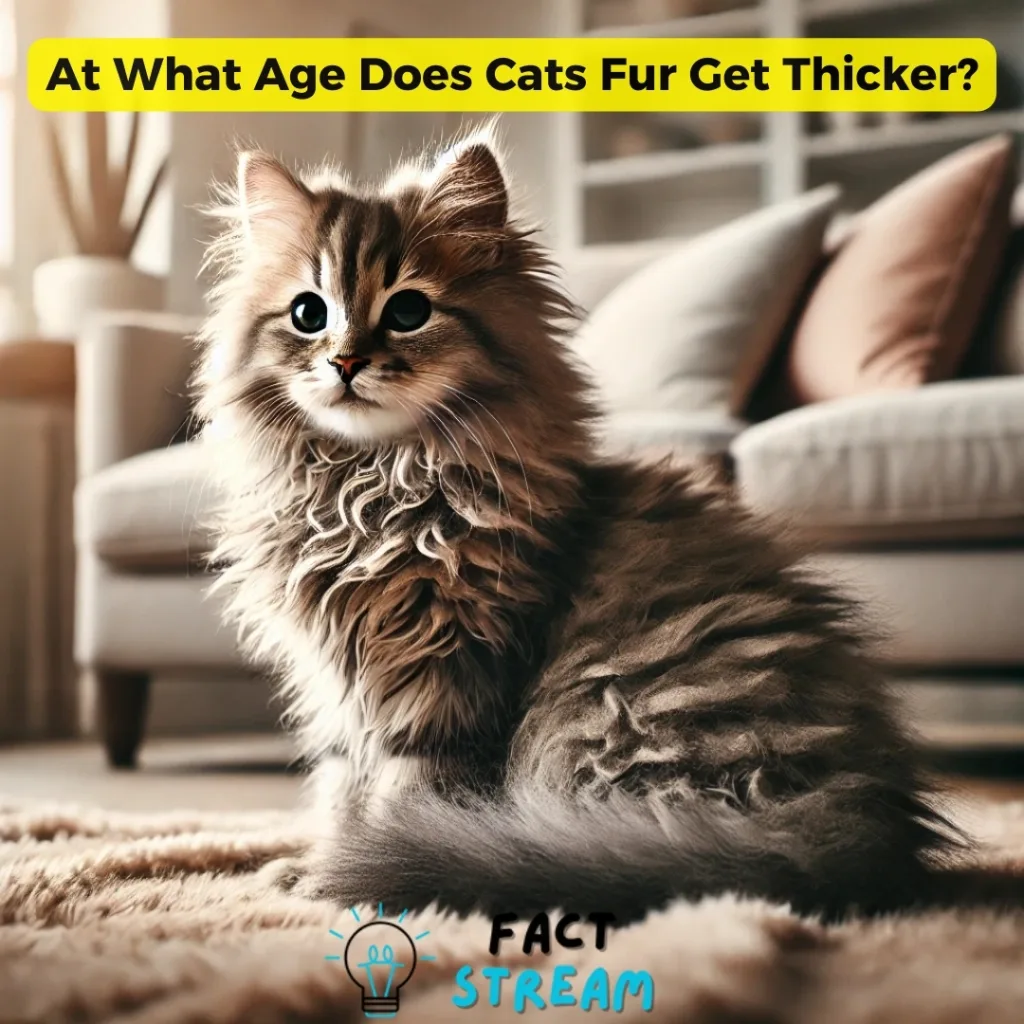At What Age Does Cats Fur Get Thicker?
Take a look at your cute kitten. Their soft fur makes you want to pet them! But as they grow, you might wonder, “At what age does cats fur get thicker?” Will their coat always be like this or will it change?
A cat’s fur changes as they grow. It’s affected by their genes, hormones, and where they live.
How a Cat’s Fur Grows
It may surprise you, but a cat’s fur is always changing. It grows and sheds just like our hair. This cycle has four parts:
- Anagen Phase: This is when new hair grows.
- Catagen Phase: Hair growth slows down.
- Telogen Phase: Hair growth stops. The hair is still in the skin, but it’s not growing.
- Exogen Phase: Old hair falls out so new hair can grow.
These phases happen throughout a cat’s life. Their fur is always being renewed. The biggest changes happen in spring and autumn. This is when cats shed their old coat and grow a new one.
The Kitten Coat
Kittens have a soft, fluffy coat. This “kitten coat” helps keep them warm and hidden when they are small. But when they are about 6 to 12 months old, their fur starts to change. They start to lose their kitten fur and grow their adult coat. You can tell if a kitten will have long hair when they are 5-6 months old.
This change can be big, especially for cats with long fur. You might see lots of fur around your house.
When Does a Cat Get Their Adult Coat?
Cats start to lose their kitten fur around 6-12 months old. But it can take longer for their adult coat to fully grow. Some cats have their thickest fur by age two. But bigger breeds like Maine Coons might not have their full coat until they are 4-5 years old!
It’s kind of like when humans go through puberty. Their bodies change even after they have a growth spurt. A cat’s fur can also change as they get older. It can get thicker or change color.
The Effects of Sunlight
A cat’s coat is also affected by sunlight and the seasons.
When the days get shorter in the fall, a cat’s body starts to grow a thicker coat. This helps keep them warm. Even indoor cats grow a thicker coat in the winter. Even though they don’t go outside, their bodies know that it’s colder. Their winter coat grows when there is less sunlight. Cats shed their winter coat as the days get longer.
In the spring, when there is more sunlight, cats shed their thick winter coat. They grow a lighter coat for the summer. You’ll probably see more fur around your house during these times. Cats will shed their winter coat around April and October.
Shedding Is Normal
Shedding can be annoying, but it’s important for your cat. It helps them stay at a good temperature and keeps their fur healthy.
Cats usually lose about 1,000 hairs a day. During shedding season, you’ll see a lot more fur. You can brush your cat to get rid of loose fur. This will help keep your house clean. Brushing is also good for your cat. It can help prevent hairballs and is good for their skin.
A Healthy Diet Is Important for Fur
Just like eating healthy foods can make your hair look nice, a good diet is important for your cat’s fur. Cats need food with lots of protein and other nutrients to keep their skin and fur healthy. Cats are carnivores. This means they need to eat meat. Meat has taurine, which is important for a healthy cat coat.
If your cat’s fur starts to look different, talk to your vet. It could be a sign that they are sick. If a cat has dull or oily fur, or is shedding a lot, they may have a health problem. Some health problems that can cause these symptoms are fleas, allergies, diabetes, and kidney disease. Painful conditions like arthritis can also cause fur problems because cats may not be able to groom themselves well enough. Stress can also cause cats to shed more.
Older cats may have more matted fur because they don’t groom as well. Matted fur can also be a sign of stress. Cats that are in pain may not be able to groom themselves well, so they may have matted fur. Older cats also produce more oil, which can make their fur mat more easily.
How to Groom an Older Cat
Older cats might not be able to groom themselves as well. This could be because of arthritis, being overweight, or other health issues. Their skin makes less oil as they age, which can also contribute to matted fur.
You can help your older cat by brushing them, trimming their nails, and cleaning their ears. Be gentle and use soft brushes. You can use a metal comb and a pluck brush to groom your cat. Baby powder can be used to treat greasy fur. Always brush your cat’s fur in the direction the hair grows. Never comb a cat’s tail. Only brush it.
If your older cat has trouble grooming, talk to your vet. A vet or a groomer can help with matted fur.
Love the Fluff
No matter what kind of cat you have, their fur is a sign of how healthy they are. Learning about how their fur grows and changes can help you keep your cat healthy.
So, next time you see cat fur all over your clothes, remember that it’s normal! It’s all part of having a cat.


